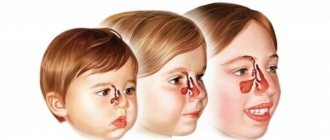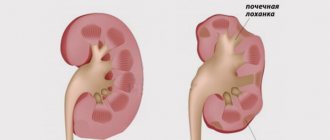Vegetative-vascular dystonia in children is a whole complex of functional disorders of various organs due to a violation of the regulation of their activity by the autonomic system. In medical terminology, this condition is also called neurocirculatory dystonia. Depending on the function of which organ is impaired, the pathology is manifested by the following problems:
- respiratory;
- neurotic;
- cardiac symptoms;
- vascular crises;
- violation of thermoregulation.
Causes of the disease
There are many reasons for the development of vegetative vascular dystonia in a child. The incidence of morbidity is directly affected by the age of the child. The highest percentage of VSD is observed among schoolchildren who are entering a phase of active development, hormonal maturation and increased psycho-emotional stress. But even parents of newborns can encounter vegetative-vascular dystonia in children, and find out what it is.
From birth to 1 year:
- hypoxia;
- infections affecting intrauterine development;
- heredity;
- congenital diseases;
- birth injuries;
- pregnancy with complications (toxicosis, gestosis, infection);
From 1 year to 5 years:
- past infections;
- chronic diseases;
- anemia;
- allergies;
- head injuries.
From 5 to 7 years:
- psychological and emotional stress;
- unfavorable home environment;
- nutritional imbalance;
- hormonal changes;
- physical inactivity;
- stress.
Negative factors that can provoke the manifestation of VSD:
- psycho-emotional: stress, overwork, negative home environment, lack of trusting relationships within the family, school load;
- infectious diseases;
- hereditary predisposition;
- lack of proper sleep;
- passive lifestyle.
Where does VSD come from in children?
Almost everyone knows that vegetative-vascular dystonia appears against the background of severe stress or physical overexertion. So why do parents so often hear such a disappointing diagnosis - vegetative vascular dystonia in a child?
Nervous stress is just an impetus for the appearance of the first symptoms. The real background for its development is completely different. These include weak immunity, frequent anxiety, childhood suspiciousness, and illnesses and injuries suffered in early childhood. All this creates fertile ground for pathological reactions of organs and systems to external stimuli.
Sometimes a baby is already born with vegetative-vascular dystonia, sometimes he is predisposed to it. All this depends on heredity and the nature of the pregnancy in his mother. Experts note that in children whose parents have VSD, the risk of developing autonomic dysfunction in the future increases by 15–20%. In this case, the predisposition is most often transmitted through the female line.
There is also an opinion that if during pregnancy the mother often experiences discomfort due to VSD, is overly restless, and leads an unhealthy lifestyle, there is a high probability of giving birth to a child with disorders of autonomic regulation. Similarly, the likelihood of early manifestations of dystonia in children is influenced by complicated childbirth, fetal hypoxia, and trauma to the skull and spine at birth.
When provoking factors are superimposed on a favorable background - mental fatigue, stress, an unfavorable atmosphere in the family, injuries, illnesses - the course of the disease from asymptomatic can turn into a moderate and sometimes severe form with all that it entails.
Symptoms of vegetative-vascular dystonia in children
The manifestation of VSD is complex and occurs according to the same symptoms as other diseases, complicating the correct diagnosis.
Difficulties are caused by diagnosing vegetative-vascular dystonia in children of the first year of life. The newborn cannot speak, the symptoms do not have a pronounced form. He can only communicate all his problems by crying. Parents need to closely monitor the baby’s appetite, bowel regularity, frequency of regurgitation, and sleep. Vegetative-vascular dystonia in infants is accompanied by symptoms indicating problems with the gastrointestinal tract - appetite worsens, stool becomes irregular (constipation, diarrhea), weight gain slows down, allergies and skin rashes are possible. Sleep is disturbing and short-lived, often interrupted by crying.
Vegetative-vascular dystonia in a child from one year of age is expressed in the form of low adaptive abilities of the body. He is susceptible to infections and frequent colds, is irritable, tearful, fearful and anxious, and does not interact well with other children. There is a strong attachment to the mother. Weight gain slows down, body weight decreases, and appetite worsens.
Vegetative vascular dystonia in a child 7 years of age and older is accompanied by paroxysmal symptoms. The child's sleep becomes restless, accompanied by insomnia, nightmares, anxiety attacks and worries. There are sudden changes in mood and a tendency to hysterics. Complaints of headaches, shortness of breath, feelings of fatigue and weakness, and memory impairment are not excluded. Body temperature periodically increases to low-grade fever, thermoregulation is impaired: the child sweats heavily or experiences a feeling of chilliness.
With vegetative vascular dystonia in a child over 9 years old, symptoms appear due to increased hormonal activity, which does not go unnoticed either for the physical or for the psycho-emotional state.
The manifestation of vegetative-vascular dystonia in children and adolescents has its own characteristics. This age is characterized by the dominance of a certain syndrome:
- cardiac - bradycardia, arrhythmia, tachycardia, increase/decrease in pressure, feeling of lack of air, headaches, darkening of the eyes when changing position, pain in the heart area;
- respiratory syndrome - difficulty breathing, accompanied by shortness of breath, a feeling of lack of air, noisy and deep breathing;
- syndrome of impaired thermoregulation - chilliness, sweating, increased body temperature to low-grade fever;
- neurotic - apathy, which manifests itself in attacks, worsening mood, depression, anxiety, the appearance of phobias and hysterics;
- vegetative-vascular crisis - problems with urination, stomach pain, intestinal colic, numbness of the limbs, pallor or hyperemia of the skin.
Causes of vegetative-vascular dystonia in children
Autonomic dystonia syndrome does not occur without cause, but develops as a result of the influence of negative factors on the body over a long period of time. For the normal functioning of the human body, strict regulation of the autonomic system is necessary. And the autonomic nervous division controls the internal organs and blood vessels. Therefore, if the interaction is disrupted in even the slightest way, serious consequences begin to develop in the form of VSD in children and a number of concomitant pathologies. The occurrence of dystonia in adolescents can be easily explained by modern lifestyle.
The causes of the development of the disease can be hormonal changes in the body, puberty
The following reasons for the development of dystonia in children and adolescents are identified:
- hormonal changes in the body, puberty;
- rapid development of the skeleton and organs, but slow growth of blood vessels. This leads to disruption of the blood supply to organs and systems important for life, as well as hypoxia;
- brain injuries;
- past infectious diseases;
- genetic predisposition. If at least one of the parents has diseases of the cardiovascular system, then the risk of developing VSD in the child increases several times;
- congenital developmental anomalies;
- sedentary lifestyle;
- stressful situations of various types;
- bad habits. Most people start smoking and drinking alcohol during adolescence. And due to insufficient development, the body reacts to the effects of toxic substances by developing dystonia;
- physical and mental stress;
- mental trauma, neuroses;
- constant overwork, problems sleeping;
- pathological course of pregnancy or childbirth.
One of the above factors or a combination of them can trigger the development of VSD. The most important reason for the appearance of vegetative-vascular dystonia in adolescents is stress, which awaits a teenager at almost every step. First love, relationships with peers and parents, study - all these aspects are often accompanied by stressful situations that have an adverse effect on the fragile nervous system of a teenager.
Classification of pathology
The classification of VSD takes into account the prevailing criteria for determining the form of the course of this disorder.
Establishing etiological causes is necessary when determining the type of VSD. Taking this into account, the following are distinguished:
- psychogenic type;
- infectious-toxic type;
- dishormonal type;
- hereditary type;
- mixed type.
Based on the totality of available signs and the nature of distribution, VSD can occur in a generalized, systemic or local form.
VSD is also classified according to the syndromic approach. There are: cardiac, respiratory, neurotic, thermoregulation disorder syndrome, vegetative-vascular crisis, etc.
VSD occurs in varying degrees of severity. According to this criterion, mild, moderate and severe forms are distinguished; by type of flow: latent, permanent and paroxysmal.
Types of disease
Types of VSD depending on the nature of the disorders. The sympathetic type of VSD affects the sympathetic division of the autonomic nervous system. It can be identified by characteristic signs:
- nervous excitability, short temper, aggressiveness, impulsiveness;
- neuroses;
- change in body temperature;
- tachycardia;
- feeling of heat;
- decreased concentration;
- dryness and flaking of the skin;
- good appetite, but no weight gain, and in some cases weight loss occurs.
The vagotonic type is formed due to a malfunction of the parasympathetic system. Children become lethargic, experience a constant feeling of weakness, and rapid fatigue. A general change in condition is accompanied by attacks of fear, depression, anxiety, and panic attacks.
Signs of VSD of the vagotonic type:
- low blood pressure;
- paroxysmal pain in the heart area;
- breathing is rare and labored;
- swelling around the eyes;
- increased sweating;
- increased salivation;
- headaches, dizziness, attacks of nausea;
- pallor, protruding vascular network on the surface of the skin.
VSD of mixed type can be characterized as a violation of the stability of blood vessels, which manifests itself in the form of instability of blood pressure. It tends to sharply increase or decrease to minimum levels.
Diagnosis of VSD
If you have symptoms of VSD, you should contact your local pediatrician. He will conduct an examination, collect complaints, make a conclusion based on the aggregate data and give a referral to specialized specialists, whose task is to exclude other pathologies.
A comprehensive examination by doctors awaits:
- neurologist;
- cardiologist;
- endocrinologist;
- gastroenterologist;
- otolaryngologist;
- ophthalmologist.
Diagnostic research methods used:
- taking an electrocardiogram;
- electroencephalography;
- rheoencephalography;
- echoencephalography;
- rheovasography;
- daily heart monitoring.
After diagnosing vegetative-vascular dystonia in children, treatment will be comprehensive, including medicinal and non-medicinal methods.
Treatment of the disease
Treatment of vegetative-vascular dystonia in children consists of non-drug therapy and medications. Depending on the symptoms of vegetative vascular dystonia in a child, treatment is prescribed.
Therapeutic measures that exclude the use of medications:
- physiotherapy;
- massage course;
- hardening;
- physical therapy under the supervision of a physician;
- taking herbal medications with a calming sedative effect.
A visit to a psychologist is recommended to stabilize the mental state of adults and children and normalize family relationships. A psychologist will help you cope with fears, phobias, and self-doubt, which often accompanies vegetative-vascular disorders in childhood. One of the leading experts in this field is psychologist and hypnotherapist Nikita Valerievich Baturin. His techniques and exercises can be found on his YouTube channel, and detailed information about him can also be found in his profile.
In case of a complicated form, drug therapy may be prescribed. The start of taking medications, dosage, and duration of course treatment are agreed with the attending physician.
Depending on the severity of the manifestation of VSD, the following groups of drugs are prescribed:
- neuroprotectors;
- cerebral circulation stimulants;
- drugs that normalize blood pressure;
- nootropics;
- tranquilizers;
- antidepressants;
- multivitamins;
- antispasmodics and analgesics.
The success of treatment depends on timely contact with a specialist and taking action. This makes it possible to alleviate the course of VSD and, as you grow older, to normalize your general condition.
Reasons for violation
Vegetative-vascular dystonia is a secondary syndrome that is not considered by pediatricians as an independent disease. According to Dr. Komarovsky, the diagnosis of VSD is established only in underexamined children. Its manifestations should be dealt with by specialized specialists in order to identify the real cause of the ailment.
Depending on the signs that arise, the child is examined by: a neurologist, cardiologist, endocrinologist. Conditions caused by VSD cannot be ignored. Autonomic dysfunction can give impetus to the development of the following dangerous diseases: hypertension, stomach ulcers, bronchial asthma.
Therefore, at the first signs of illness in a child, it is imperative to contact a medical institution. The pediatrician will prescribe a thorough examination, the results of which will determine the cause of the pathological condition.
A hereditary type of VSD is often encountered in pediatrics. Typically, the likelihood of developing the disease is transmitted through the maternal line. Also, the occurrence of vegetative-vascular dystonia in a child can be caused by problems with the health of the mother during pregnancy and childbirth. Toxicosis, hypoxia, birth trauma, intrauterine infections - all this can lead to vascular problems in newborns in the future.
In addition to the hereditary factor, the cause of neurocirculatory dysfunction can be various traumatic conditions. Conflicts in the school community, family, excessive physical or mental stress, regular stress - all this can lead to the development of abnormalities at the vascular level. Other causes of VSD include:
- unfavorable weather conditions;
- dangerous environmental situation in the region of residence;
- low physical activity;
- violation of the daily routine and principles of healthy eating;
- infectious and endocrine diseases;
- allergies;
- hormonal changes in the body during adolescence.
Most often, autonomic disorders are diagnosed during periods of active child growth (5-8 years, puberty). This is explained by the high load on the body and the lability of the nervous system.











